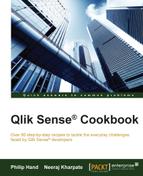Qlik is a market leader in the field of Business Discovery. As a company, it has been a pioneer when it comes to rapid returns on investment on business intelligence implementations. Its flagship product “QlikView” has been amongst the leaders in Gartner’s magic quadrant for the past three consecutive years. This bears testimony to the fact that Qlik and its offerings have a wide-scale acceptability among business users.
The world of Business Intelligence has seen a paradigm shift over the last couple of years. With an increased level of market understanding and learning from customer experiences, Qlik has made significant developments in its product suite to suit the changing market demands.
With the evolving business scenario in mind, Qlik came up with “Qlik Sense®” in mid-2014. Qlik Sense® is a self-service data visualization platform; users can design their own applications using the simple drag and drop interface in Qlik Sense®. They can directly create their own applications on the web and share them through a centralized hub. A Qlik Sense® application can even be shared in the cloud.
A real thought process has been put into the development of Qlik Sense® according to what the businesses of today require. For example, there is a native “Map” object available in Qlik Sense® which stems from the need for Map extensions. The end users can edit the properties of the objects on the screen directly through the interface. The “Qlik Dev Hub” provides a fast and easy approach to create extensions. In a way, Qlik Sense® gives the authority of the app to the end user and asks them to do their own data discovery in their own bespoke way.
Since the time of its launch, Qlik Sense® has garnered a huge interest in the business community and we have no doubt about its great future in the days to come. It has the capability to reach the depths of any organization very quickly and users will certainly love it.
This book uncovers all the wonderful features of this great product. It helps the user to overcome the challenges faced in day to day Qlik Sense® implementations. The solutions are discussed through simple and easy to understand recipes. We hope you find it useful.
Chapter 1, Getting Started with the Data, introduces the user to different methods of loading data into Qlik Sense® from various sources, such as relational databases, data files and also custom databases, such as SAP. We will also delve into the creation and usage of a Master Library in Qlik Sense®.
Chapter 2, Visualizations, focuses on the best design practices in Qlik Sense® in order to create engaging applications. It also looks at the concept of snapshots and stories in Qlik Sense.
Chapter 3, Scripting, introduces the user to the techniques of writing a well-structured script in Qlik Sense®. It discusses and explains the benefits of concepts, such as subroutines, script files, and loops in scripts that form a part of the arsenal of a good Qlik Sense® developer.
Chapter 4, Managing Apps and User Interface, introduces the user to the concept of publishing Qlik Sense® apps on the server and Qlik Sense® cloud. We will also look at certain key Qlik Sense® objects and their usage for the right purpose and to convey the right information.
Chapter 5, Useful Functions, deals with some very useful functions available in Qlik Sense®. We present some challenging scenarios that a Qlik Sense® developer faces and provide solutions for these.
Chapter 6, Set Analysis, is one of the most powerful concepts in Qlik Sense®. This chapter explains to the user the process of writing Set Analysis expressions from scratch. We will also look at some advanced variations in Set Analysis expressions, such as the introduction of flags, defining ranges using the Concat function in Set Analysis expressions, and so on.
Chapter 7, Extensions in Qlik Sense®, focuses on creating new out-of-the-box extension objects in Qlik Sense® using web technologies.
Chapter 8, What’s new in Version 2.1.1?, discusses the new features introduced in Qlik Sense® version 2.1.1. The users are introduced to the new Qlik Dev Hub and the process to create extension objects using the extension editor and mashups using the mashup editor.
Appendix, it gives the details of keyboard shortcuts used in Windows and Mac system.
We also explain how to embed the Qlik Sense® objects on a web page making use of the Single configurator. Some of the other features discussed in the chapter are "Smart Data Profiling"and the new "Smart Search" functionality.
